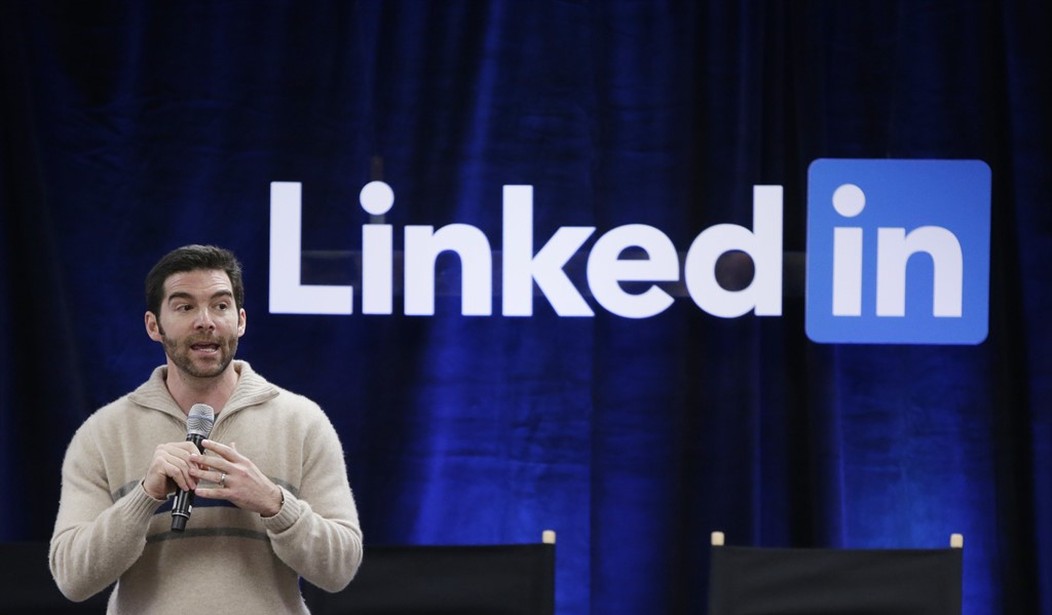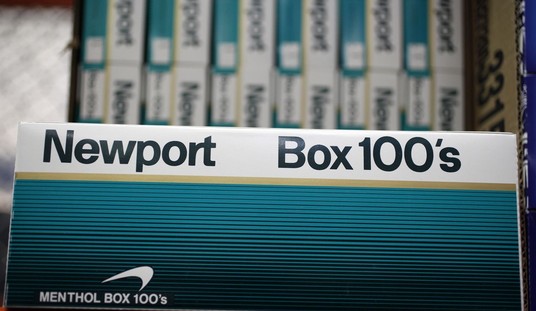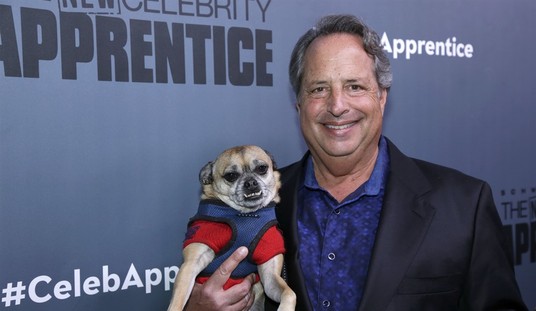Of all the platforms for “disinformation” that might interest the government-industrial complex, why LinkedIn? It exists not so much to move debate and argument, but resumés and higher-level Help Wanted notices. It’s a professional-networking platform, not Hot-Take Central.
And yet, according to depositions submitted in lawsuits from several state AGs over government censorship, the State Department lobbied LinkedIn hard to join the Big Brother Club. Court filings reveal that the pitch was no one-off but a concerted effort, as The Federalist reported late yesterday:
“I’ve been “tasked with building relationships with technology companies,” Samaruddin Stewart, then a senior adviser for the State Department’s Global Engagement Center or “GEC,” wrote in an early-February 2020 introductory email to LinkedIn, allegedly requesting a meeting. According to the lawsuit, his email also suggested he would be reaching out to other social media companies interested in “countering disinformation.”
On March 9, 2020, Stewart again contacted LinkedIn, referencing an earlier verbal discussion and writing:
I’ll send information [to LinkedIn representatives] about gaining access to Disinfo Cloud — which is a GEC funded platform that offers stakeholders an opportunity to discover companies, technology, and tools that can assist with identifying, understanding, and addressing disinformation. …
Deposition testimony by FBI Agent Elvis Chan suggests GEC’s marketing of the censorship tools went beyond making cold calls (or emails) to LinkedIn and other Big Tech companies. It also seemingly went further than providing product advice and samples on Disinfo Cloud: The GEC’s Technology Engagement Division apparently hosted infomercials to help the private vendors market their censorship software.
As Margot Cleveland concludes from the testimony, the State Department transformed itself from a diplomatic service to a sales organization on behalf of domestic censorship. Under what congressional aegis did this transformation take place? The State Department does have its own intelligence and security services, but those are tasked with informing and protecting its diplomats, not imposing limits on speech and debate within the US. Indeed, to the extent that the State Department has a core mission, it’s supposed to spread liberty and democracy abroad, not stifle it at home.
[This again is why we fight to remain independent of social media platforms and attacks on advertisers. Join HotAir VIP today and use promo code SAVEAMERICA to receive 40% off your membership! If you are not yet a VIP or VIP Gold member, sign up now to catch future episodes as well. You also gain access to lots of exclusive content, such as our shows The Amiable Skeptics featuring Adam Baldwin, The Week in Review, our weekly VIP Gold Chat with Cam Edwards, and more. Plus, our members can join the conversation in our comments sections. It’s always a good time to sign up!]
We already knew this was happening at Facebook and Twitter. One has to assume that Google participates in this too, although as of yet we don’t have access to their internal communications to confirm just how far the Big Brother system went. But again, why LinkedIn?
Jonathan Turley has his suspicions. He believes that LinkedIn may have been intended to act as the punitive arm of this Orwellian conspiracy:
The push to incorporate LinkedIn is chilling. This is a site where millions post their resumes and backgrounds for employment purposes. The effort to get the company to filter such postings through its Disinfo Cloud could result in individual blacklisting with government support. If someone has an account on LinkedIn who was flagged as a purveyor of “disinformation” by the State Department, the suggestion is that the company should take steps to remove or take other action with regard to that person. In other words, LinkedIn could be used as the business end of blacklisting.
In earlier columns, I noted that the Biden administration may have played us for chumps. As we celebrated the demise of the infamous Disinformation Governing Board with its “Disinformation Nanny,” the Biden administration never disclosed a larger censorship program, including the use of up to 80 FBI agents. …
The outreach to LinkedIn is particularly concerning and the House should explore what the State Department was suggesting that the company should do with those individuals or groups deemed disinformers. For many, Linkedin is a chance to “connect to opportunity” but, for the government, it could offer a more menacing opportunity to connect blacklists to the blacklisted.
That’s exactly what this looks like. Given the nature and purpose of LinkedIn, there is little “disinformation” spread risk in the network. If a risk of espionage within LinkedIn exists, that would fall under the FBI’s jurisdiction for domestic counter-intelligence, certainly not with the State Department. The purpose of linking GEC to LinkedIn as well as communications platforms such as Twitter and Facebook would be to extend deplatforming for disfavored speech to careers and income. In fact, there’s really no other rational purpose for State and GEC to care at all about LinkedIn.
And while Turley rightly castigates the Biden administration for operating and expanding this Big Brother government-industrial complex, let’s pay attention to the dates involved, too. These e-mails go back at least as early as March 2020, when the pandemic struck and almost a full year before Joe Biden took office. By that time, the State Department’s Division of Orwell was already fully functional, emphasis mine:
The Stewart emails establish that in 2020, federal government actors contacted social media giants to promote GEC’s Disinfo Cloud. GEC represented that this government platform provided “companies, technology, and tools” to “assist with identifying, understanding, and addressing disinformation.” Then it gave private tech companies access to Disinfo Cloud.
These efforts had already been underway for a while, clearly. March 2020 was merely the earliest time frame yet for Foggy Bottom’s big sales-pitch rollout. The question isn’t just What in the hell was going on at State?, but also when the hell was it going on — and who knew about it? Maybe someone should ask Mike Pompeo, since this happened on his watch. And Donald Trump, for that matter.
In other matters, the latest episode of The Ed Morrissey Show podcast is now up — a bit late, but better late than never! Andrew Malcolm and I had a stream-of-consciousness episode this week:
- Do consumers have the power to influence corporate decisions? Bud Light and Nike had better hope not …
- Is truth still important in public life?
- Why are we talking about … brothels?
The Ed Morrissey Show is now a fully downloadable and streamable show at Spotify, Apple Podcasts, the TEMS Podcast YouTube channel, and on Rumble and our own in-house portal at the #TEMS page!







Join the conversation as a VIP Member